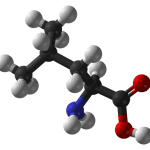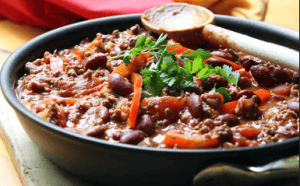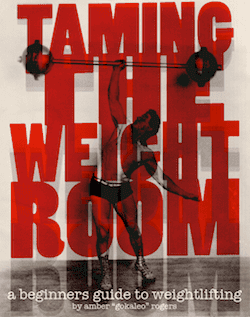Everyone’s exercise tolerance and fundamental needs are going to be unique, but there are a few things we can generalize. I think there is a minimum that almost everyone will need to meet in order to be metabolically healthy, and also a point at which exercise stops being helpful and becomes harmful. Between those two points is the potential for individualization and experimentation.
How Much Do You Need?
There’s actually been quite a bit of research into the health benefits of exercise and how much exercise is necessary to experience those benefits, and currently it appears that the amount necessary to support metabolic and cardiovascular health is fairly modest. This is good news for people who have a hard time getting motivated or who don’t enjoy it, or who simply don’t have a lot of time. The current, evidence based recommendations that virtually every reputable public health agency have adopted are as follows:
- 150 minutes a week of moderate intensity exercise (such as hiking or brisk walking)
OR
- 75 minutes a week of vigorous exercise (such as running or spinning)
AND
- full body resistance exercises twice a week (such as weight lifting or even yoga. These activities can be included in the 150 or 75 minutes above if they elevate your heart rate adequately).
You can meet these minimums in five 15-30 minute sessions, depending on the intensity you work at. The higher the intensity of your workout, the shorter it can (and really should) be.
For more information on how to determine the intensity of your exercise, check out my ‘Walking for Health and Fitness’ post.
How Much is Too Much?
Determining what is ‘too much’ is much less cut and dry. Clearly there are people (like Ironman Triathletes and Ultra endurance runners) who thrive on large volumes of exercise. But it is possible to exercise too hard, or too much. Overtraining is a real condition, with a pretty well defined set of symptoms, although it can be difficult to diagnose it properly.
The objective symptoms of overtraining include: changes in heart rate response, elevated cortisol after exercise, reduced reaction time and performance, and immune suppression. The subjective symptoms include: changes in mood, sleep disturbances, perception of stress and changes in self perception.
Researches have reached somewhat of a consensus regarding the classification and stages of ‘overtraining’, as follows:
‘Overtraining‘ is a catch-all term to describe the process of intensified training leading to decreases in performance. The first stage of overtraining is ‘Functional Overreaching‘ in which performance suffers but resolves after adequate rest. ‘Non-functional Overreaching‘ is a decrease in performance and psychological and neuro-endocrinological symptoms that resolve after adequate rest. And ‘Overtraining Syndrome‘ is a longer term decrease in performance (more than 2 months) accompanied by more severe objective and subjective symptoms of overtraining.
Diagnosing
It is important when attempting to diagnose overtraining to rule out other psychological or physiological illnesses that could be producing these symptoms. There are MANY conditions that could be present, from endocrine disorders to nutritional deficiencies to infectious disease to eating disorders. Like other troublesome self-diagnoses (Sugar Addiction, and Adrenal Fatigue for instance) the danger in self-diagnosing and treating is that there may be a real illness present for which inaccurate self-diagnosis hinders appropriate treatment. In my opinion and experience, when a non-athlete is experiencing these symptoms it’s far more likely they’re dealing with a nutritional deficiency or an eating disorder than true overtraining. Getting proper diagnosis and treatment is vital or the problem will only get worse.
Some signs to watch for that could indicate that there could be a physiological, psychological or overtraining problem developing:
- insomnia
- anxiety and/or depression
- changes in self perception
- fatigue
- increasing anxiety about and/or attention to your weight or body shape
- decreases in exercise performance
- more frequent colds and infections
- slower recovery after exercise
- loss of interest in workouts, decrease in enjoyment and sense of accomplishment
Treatment
For the vast majority of people, allowing adequate time between workouts for recovery is all that is necessary to prevent overtraining. Your individual recovery requirements are unique, the best thing you can do is monitor your energy levels and sense of enjoyment during workouts. If you are dreading exercise you used to enjoy and counting the minutes until it is over, or feeling a lack of accomplishment after workouts that used to make you feel awesome, take a few days off, and dial back the intensity of your workouts until your enthusiasm returns.
Who Needs to Stop Exercising
In some cases, complete rest is indicated, but in my opinion these cases are pretty rare. Exercise is so fundamentally important to healthy metabolic function that I think complete rest should be reserved for those who have the clinical symptoms of overtraining,and/or those who are dealing with metabolic adaptations to starvation. People who need to completely stop exercising are sick enough that they need to be under medical supervision anyway. Most people can prevent overtraining from progressing to Overtraining Syndrome by resting adequately between workouts and reducing the intensity of their activity.
If you feel like you’re dealing with something more than a temporary bout of fatigue, or resting doesn’t improve your symptoms, see a doctor. Get a referral to an endocrinologist and/or a therapist, and get tested for the psychological and physiological effects of overtraining. And keep an open mind to the potential that it might not be overtraining, that it might be a psychological issue. Getting an accurate diagnosis and appropriate treatment will ensure you won’t waste time and money treating an illness you don’t have. Follow the advice of your medical professional if you find yourself dealing with these issues. As I said above, self diagnosing, or relying on an internet personality for diagnosis, puts you in danger of not getting appropriate treatment. This is a fairly big problem, as overtraining is a trendy diagnosis these days. These symptoms should not be taken lightly.
Most people will do just fine with regular, moderate activity in the form of walking, cycling, or casual social sports activities and some basic resistance exercises a few times a week. People who enjoy more vigorous forms of exercises will likewise do fine as long as they make sure to give their body proper recovery time and eat enough to support the added demands of their training.
Read More On the Topic:
American Heart Association Activity Recommendations
World Health Organization Activity Recommendations
CDC Activity Recommendations
Diagnostic Tools for Overtraining
Scientific Methods for Diagnosing Overtraining
Early Warnings of Overtraining











 I’ve turned my popular blog series into a NEW full beginner weight lifting program ebook! And for the next week you can get it for 33% off.
I’ve turned my popular blog series into a NEW full beginner weight lifting program ebook! And for the next week you can get it for 33% off.